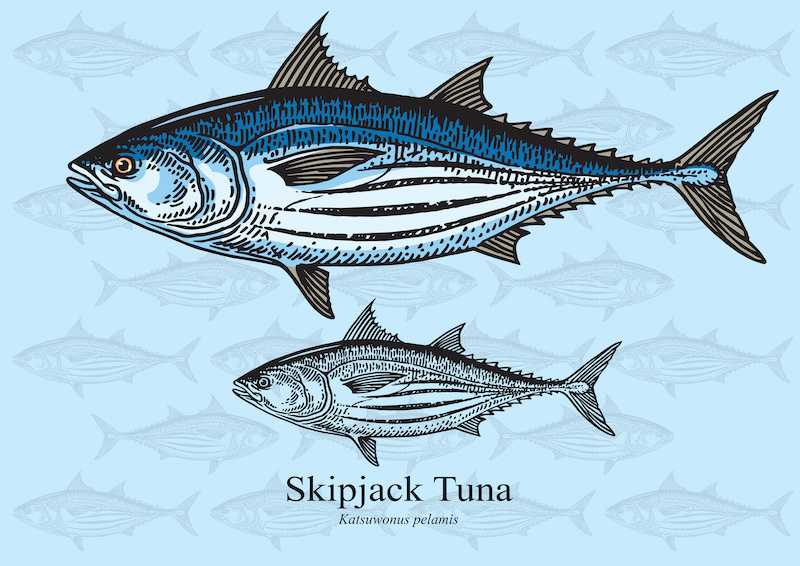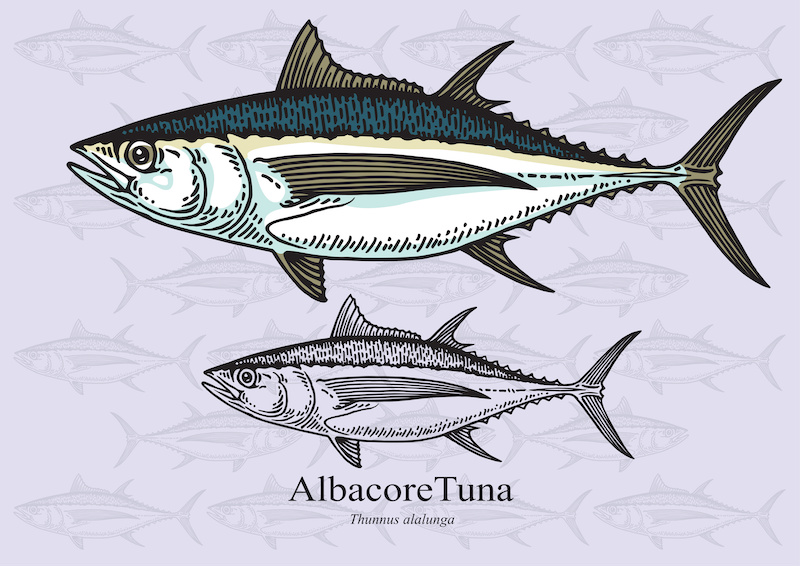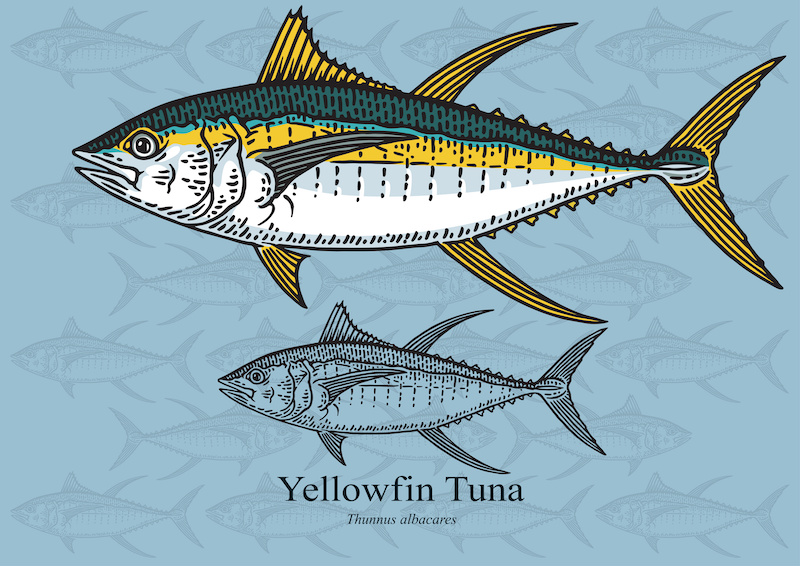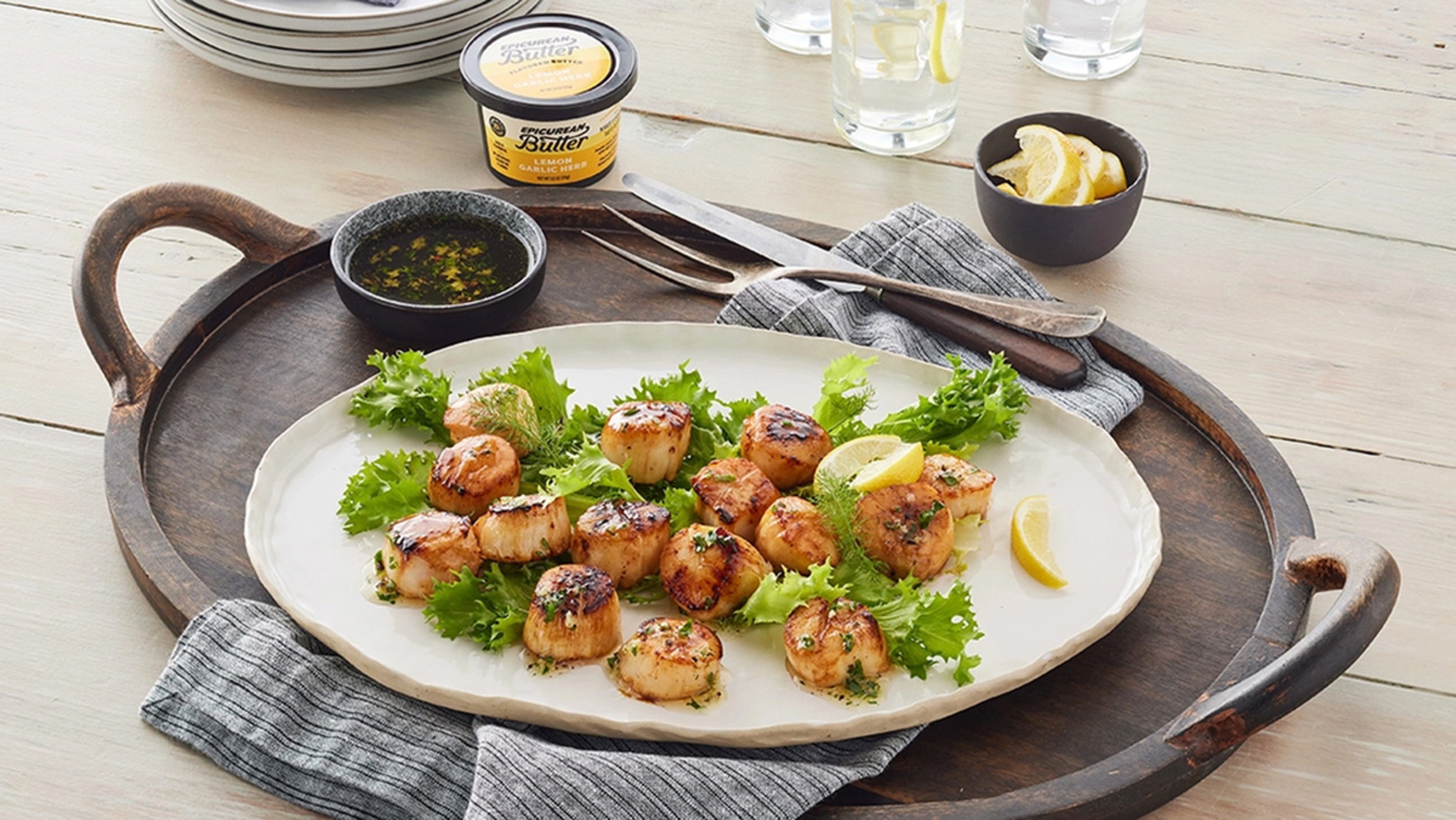Your Guide to Types of Tuna
Learn about one of the world's favorite fish and its many splendid varieties.
Sep 23, 2024
Tuna, among the speediest fish in the sea, is also one of the most prized.
We examined the remarkable powers of tuna and their exalted place in seafood cuisines worldwide in "How Tuna Benefits Your Health." Today we take a closer look at three types of tuna. One, albacore, is "white" and the other two, skipjack and yellowfin, are "light." All three are among the smaller varieties of tuna. And all are incredibly versatile, suitable for any dish from high-end seared medallions to the humble "tuna fish" sandwich.
Skipjack/Bonito (Katsuwonus pelamis)
Skipjack is a fast-swimming, medium-sized tuna (40-70 pounds). It's named for its habit of quickly surfacing and diving — an action that resembles a skipping stone — as it swims, mostly at night. They are blue to purple in color with dark bands running down the length of their bodies. They mostly inhabit the Atlantic, Pacific and Indian oceans, particularly in warmer and more tropical regions, and they swim in shoals as large as 50,000. Biologists consider them “social fish" because they travel with yellowfin and bigeye as well as marine mammals.

Skipjack owes its sustainability to its a prolific breeding and rapid maturation. That's why they're the most globally fished tuna species, accounting for 56% of the global tuna catch and 70% of the canned market in the United States.
Skipjack is canned and sold as “chunk lite tuna." It's perfect for salads or incorporating into creamy pastas. Amateur grillers can impress with steak cuts because it's an oily fish that's difficult to burn.
Skilled cooks might enjoy blackening skipjack Cajun style. This involves quickly searing the fillets on both sides in a cast-iron skillet. Serve it with traditional potato salad and spinach, and pair it with a crisp IPA.
Albacore (Thunnus alalunga)
Albacore tuna — also known as longfin tuna due to its signature oversized pectoral fins, the longest of any tuna — is one of the smallest varieties (30-90 pounds). It is silvery-blue in color with a white underbelly and can be found patrolling the Atlantic, Pacific and Indian oceans as well as the Mediterranean Sea.

Albacore's claim to fame is its sweet white flesh, which is the result of lower levels of iron-rich myoglobin. That's because albacore swim in short bursts rather than cruising at continuous high speeds, so don't require as much circulating oxygen as other species.
Albacore is the only tuna the FDA allows the premium designation of “white meat" that is subsequently marketed as “chicken of the sea."
Albacore is the second-most canned tuna in the U.S., accounting for 20% of the market and 4% of the global tuna catch. It has a mild, delicate flavor but a firm texture. That makes it perfect for grilling or for flavoring stews and chowders.
It's great in bean salads and couscous, but lends itself best to flavorful marinades. Try combinations of soy sauce, olive oil, and citrus juices. Grill the marinated medallions in a skillet and serve with green beans almondine or garlic asparagus, and pair with sauvignon blanc.
Yellowfin (Thannus albacares)
Yellowfin tuna is among the larger species of tuna (300-400 pounds). It's a champion swimmer with a metallic blue and silver body. But it gets its name from the bright neon yellow stripe that runs the length of its body and highlights its fins, finlets and tail.
Yellowfin is just as commonly known as “ahi," the Hawaiian word for “fire. This describes the smoke that arises from friction when fishing ropes continuously rub against canoes as yellowfin put up a fight.

Although they can be found in tropical and subtropical waters of the Atlantic, Pacific, and Indian oceans, they are concentrated near Thailand and the Philippines. Yellowfin travel in large schools that include skipjack and bigeye. In the eastern Pacific, they also swim with marine mammals, whales, and sharks.
Yellowfin accounts for 31% of the global tuna catch and nearly 10% of the U.S. canned market. Its flesh is lean and firm with a deep pink color, with a flavor profile that's between albacore and skipjack.
It's primarily served raw as sushi or as the preferred cut for seared steaks in restaurants worldwide. For these reasons, and because it plays nice with marinades and sauces, it is considered the most versatile of tunas. The internet is replete with recipes, many for Hawaiian poke bowls featuring raw yellowfin and custom marinades that often feature combinations of soy, sesame oil, and citrus juice. Serve it over rice with onion, cucumber, avocado, melon, mango or tangerine slices, and sprinkled with sesame seeds. Pair it with a chablis or sauvignon blanc.
You don't know tuna until you've tried ventresca

From a culinary perspective, it's the tuna's fatty underside that's the most sought after and succulent part of the fish. When the belly meat is gently hand filleted and prepared with pure olive oil, it's is known widely as ventresca, from the Italian word “ventre" for “belly."
It is often harvested from albacore or sashimi-grade yellowfin. But traditionalists with deep pockets prefer bluefin belly, which is known in Japan as a premium sushi called “toro."
Ventresca is an expensive delicacy for two reasons: its rarity, since the rear belly portion represents only 4% of its total mass, and its lusciously high fat content that is 10 times richer than other parts of the same fish. This flesh has a pink and white marbleized appearance that is generally described as tender with a creamy texture and deep buttery flavor notes.
In Japanese cuisine, its main use is for sushi, but it is also cooked gently, flavored with wasabi or soy sauce and served over rice. In Italian cuisine, Ventresca is sometimes grilled, but it's more often served over crostini, or as part of a medley of spinach, raisons and pine nuts, and especially in pasta alla carrettiera, which is pasta in garlic sauce. In Spain, it's frequently served as a tapa paired with manchego cheese or baked and served with Mediterranean seasoned roasted red bell pepper.






